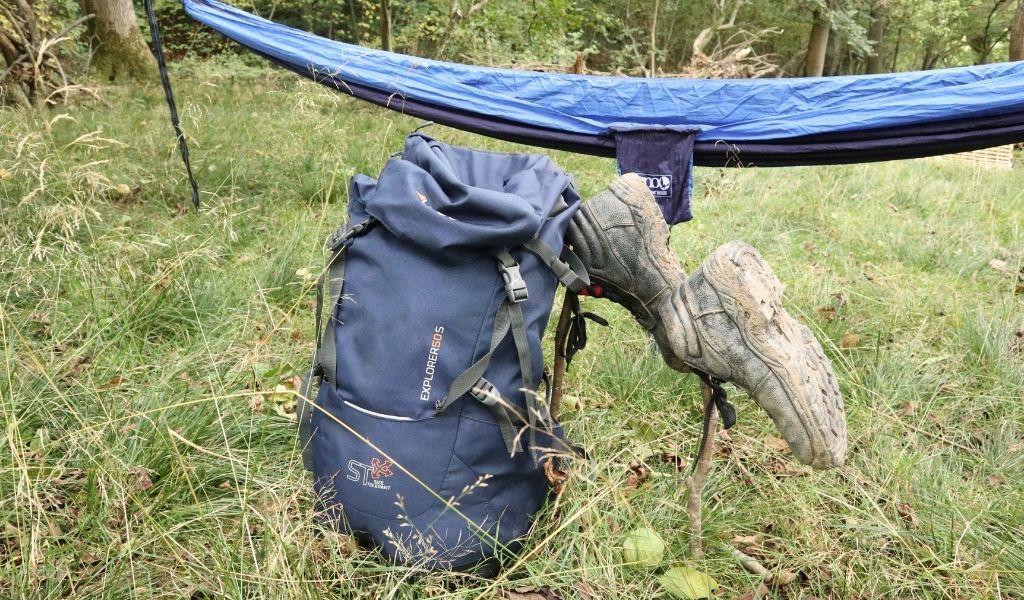Disclaimer: As an affiliate I may earn a commission on any qualifying purchases, including those from Amazon.com, at no extra cost to you – read more.
Camping in a hammock gives you a lot more freedom about where to set it up without worrying about finding flat ground. However, one question I’m frequently asked by people making the switch is where should you store your gear when hammock camping?
You can hang your gear from your hammock suspension, secure it to the stub of a tree with a spare strap, or you can store it in a gear sling which makes it easy to reach and keeps your belongings dry. It’s not recommended to store your gear in your hammock.
In this guide, I’ll run through the pros and cons of each option and also discuss some hacks to keep your boots dry.
Where to Put Your Pack When Hammock Camping?
So, as mentioned earlier, you shouldn’t store your backpack in the hammock itself. The center of gravity will pull the gear towards your body no matter where you place it and you’ll struggle to get comfortable.
Whilst some people will store their backpack on the floor next to the hammock under the cover of the tarp, I try not to. This is because the ground is often muddy and there’s a chance some critter might come and try dragging it away.
Instead, I recommend attaching your pack to your hammock suspension, attached to a tree, or in a gear sling. Here are the pros and cons of each method:
Option 1: Attach to Your Hammock Suspension
This is my preferred method. You can attach your backpack to one end of your suspension system with a spare carabiner.
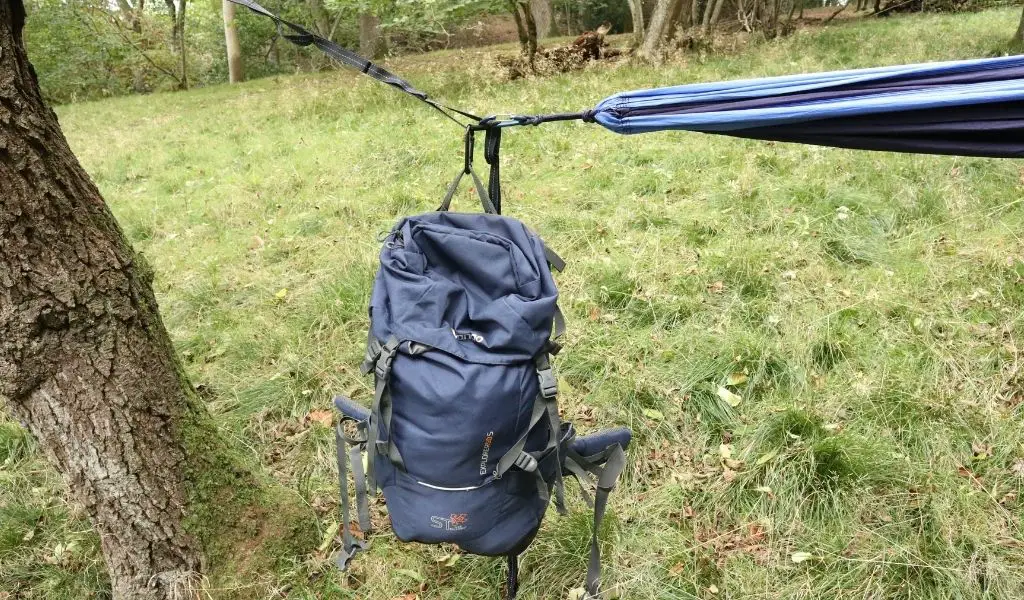
However, if you don’t have a carabiner to hand, you can simply use a stick as shown in the below image.
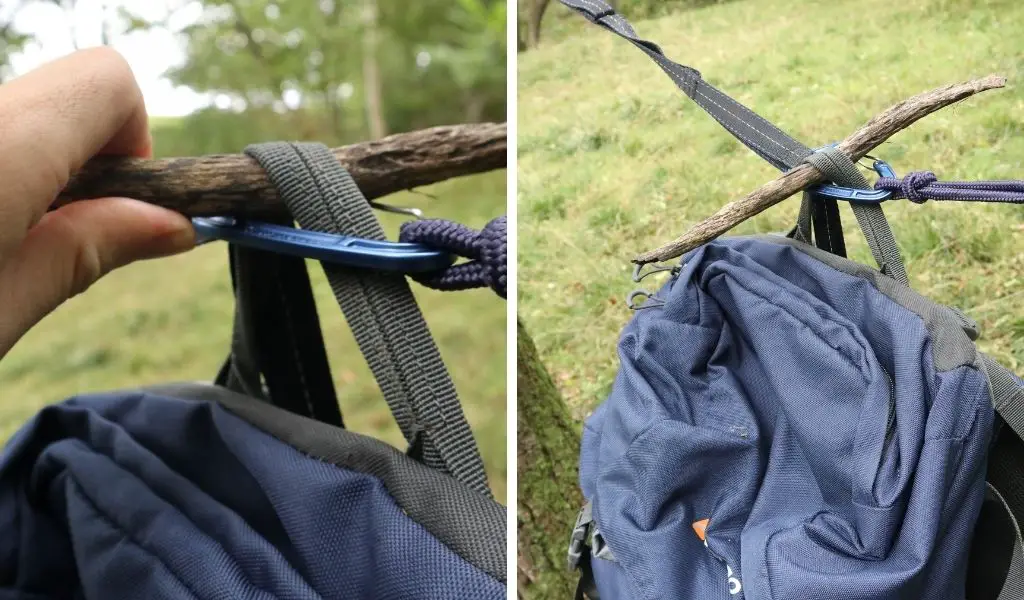
If you have a larger pack that ends up on the floor, you can simply attach it to a loop further up the suspension, although this may risk it getting wet if it protrudes from the tarp cover.
Pros:
Cons:
Option 2: Attach Your Gear to a Tree
There are two ways you can store your gear on a tree. If you’re lucky enough to find a nearby tree with a well-placed knot, you might be able to hang your backpack from this using the top loop.
However, most people will need to use a hammock strap. This can be wrapped around the tree several times to provide a few points to hang your items from.
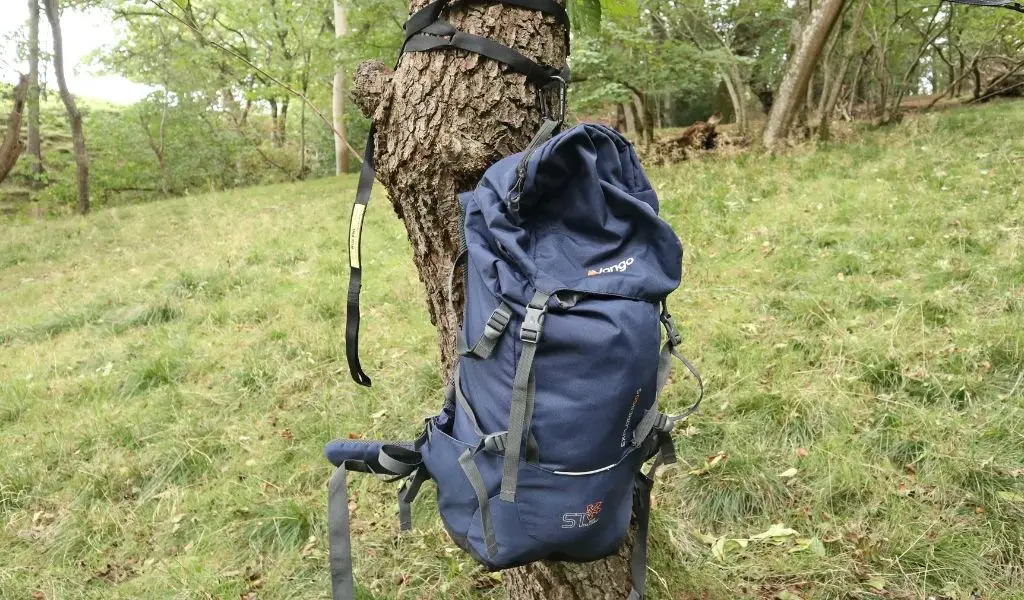
Pros:
Cons:
Option 3: Use a Gear Sling
A final place to store your gear when hammock camping is using a gear sling (also known as a gear hammock). This is a mini hammock that hangs underneath your camping hammock to keep all of your gear in.
They will typically hang from your hammock suspension so you don’t need to carry extra rope or straps, but unlike the first method, the weight is evenly distributed so you won’t notice any difference.
Top Pick: ENO Gear Sling
The best gear sling for your hammock is the ENO Underbelly Gear Sling which is lightweight and portable so it won’t take up to much room in your backpack.
It has a built-in stuff sack which ensures it’s compact when packed away. It weighs just 7oz and can hold up to 50lbs of weight which is plenty for standard hammock camping gear.
Budget Pick: Onewind Gear Hammock
If you’re looking for a cheaper option, the Onewind gear hammock is a great alternative. It’s made from ripstop nylon but weighs a little more than the ENO at just under 10oz and can hold up to 200lbs.
I like that it has a reflective cord to help identify it at night and Onewind also suggest that it can double up as a hammock chair when not being used to store your equipment.
Here are the pros and cons of this method:
Pros:
Cons:
Where to Put Your Boots When Hammock Camping?
So the first thing to address is should you wear boots in a hammock? No, I try to avoid this at all costs because it can result in your hammock getting very muddy. Not to mention the fact that it could damage the hammock over time.
So, where should you store your boots? Here are a few hacks to keep them safe and dry:
1. Use a ground peg to keep them anchored to the floor
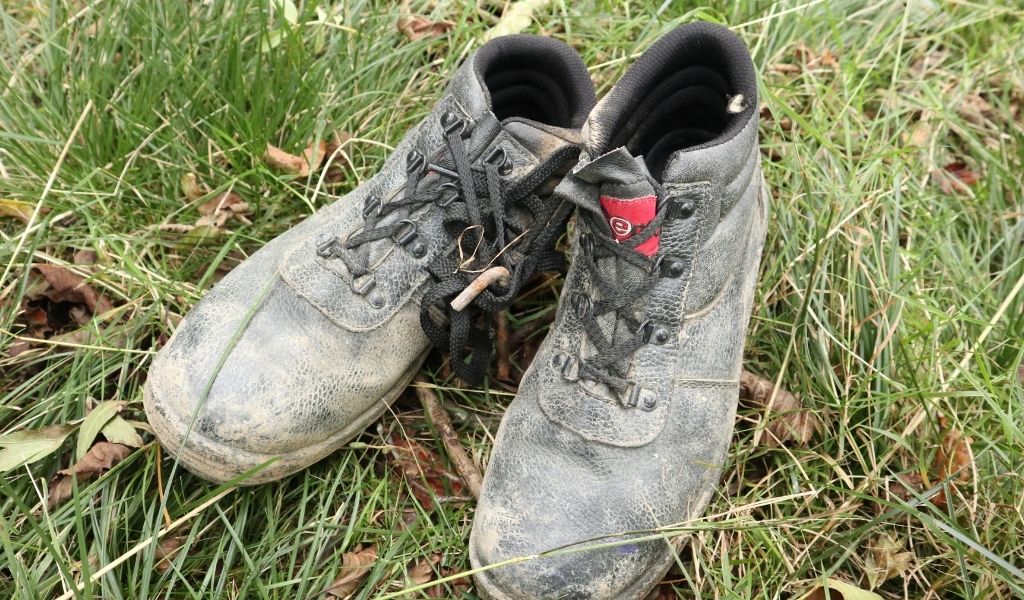
If you’re happy to keep them on the floor next to your hammock, this is perfectly fine. However, there’s a good chance that some small animal might come in the night and drag your boots away.
To avoid this, I recommend carrying a spare ground peg as an anchor point. You can place this through the laces to ensure they are still in the same place the following day.
2. Tie them together and pop them over the hammock straps
Alternatively, you can tie them together and hang them over your hammock suspension. I like this as a backup option, however, I find it difficult to reach them from within your hammock so you may end up with wet feet as you get them.
3. Use two sticks as stakes and pop your boots on top of them
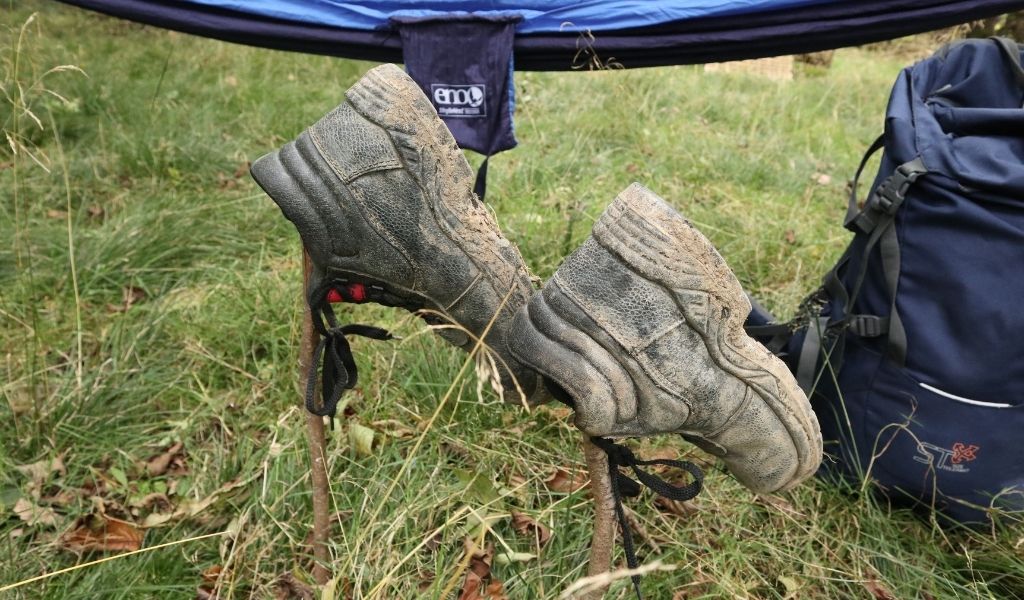
The final method is my preferred method and that’s to use two sticks as ground stakes and place your boots over the tops of them.
This allows you to keep them near your hammock under the tarp and unlike the previous method, it ensures that no bugs can get inside them at night.
Obviously, it relies on you being able to find two suitable sticks and may not be an ideal method if the ground is very hard/frosty so you cannot push them in.
How Do I Keep My Gear Dry When Hammock Camping?
The best way to keep your gear dry when hammock camping is to ensure you choose a storage location underneath the tarp. If you have no space or do not have a hammock tarp, it’s worth keeping a backpack rain cover with you.
Alternatively, you can invest in a waterproof bag. You might want to invest in an entire waterproof backpack or have a smaller dry bag inside your main pack to keep essential items that you don’t want to get wet.
Here are some recommended products that will help you keep your gear dry:
Backpack Rain Cover: Osprey
When it comes to backpacking gear, you can’t go wrong with Osprey. I’ve been using my Osprey backpack and rain cover for 4 years now and it’s still like new.
The rain cover is made from 40D ripstop nylon so it’s very durable and it comes in 4 sizes from medium to extra-large depending upon your pack size.
Waterproof Backpack: Earth Pak
If you want to go the route of a fully waterproof backpack to ensure everything stays dry, Eath Pak make both a 35L and 55L backpack. They have the highest waterproof rating of IPX8 thanks to a roll-top closure. It also has a zippered easy-access front pocket although this isn’t waterproof.
It has a chest strap and sternum strap to provide some comfort when carrying heavy weight, although I still wouldn’t recommend it for longer hiking trips as it doesn’t have much padding or back ventilation.

